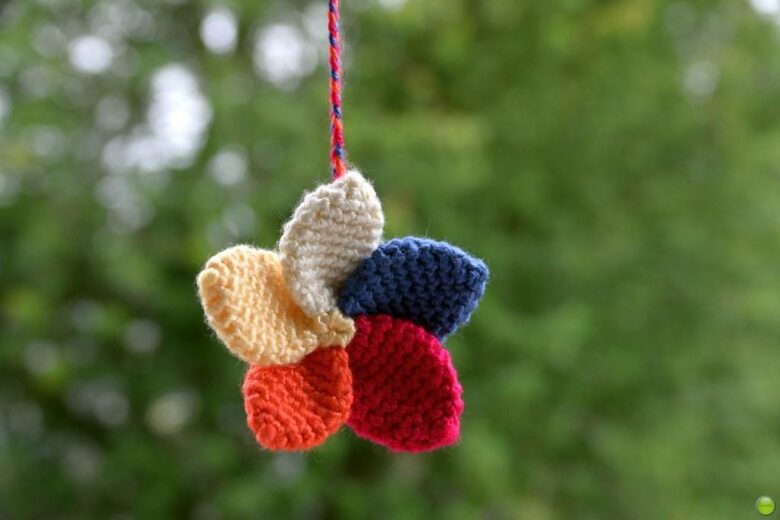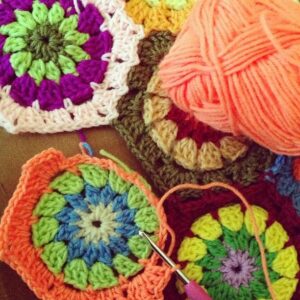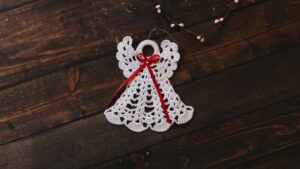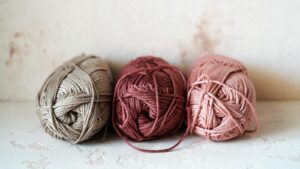Crochet patterns are like mysterious codes waiting to be deciphered by the avid yarn enthusiast. From intricate stitches to detailed diagrams, unraveling the secrets of these patterns can unlock a world of endless possibilities for your next crochet project. But fear not, for we are here to guide you through the process of decoding and understanding crochet patterns, so you can confidently create your own masterpieces with ease. Join us on this journey as we explore the art of reading crochet patterns and unravel the magic they hold within.
Understanding Pattern Abbreviations and Symbols
When diving into the world of crochet, is essential for following along and creating beautiful projects. These abbreviations are like a secret code that only seasoned crocheters understand, but fear not! With a little practice and patience, you’ll be reading patterns like a pro in no time.
One common abbreviation you’ll come across is ch, which stands for chain. This is often the first step in a crochet project and creates the foundation for your work. Another important abbreviation is sc, which means single crochet. This stitch is fundamental in crochet and is used in many patterns to create a tight and sturdy fabric.
Additionally, crochet patterns use symbols to represent different stitches and techniques. For example, a * may indicate where to repeat a sequence of stitches, while a yo (yarn over) symbol shows where to wrap the yarn around your hook. By familiarizing yourself with these symbols and abbreviations, you’ll be able to tackle any crochet pattern with confidence and ease.
Decoding Stitch Instructions and Gauge
When it comes to crocheting, understanding stitch instructions and gauge is crucial for following patterns accurately. Decoding stitch instructions involves recognizing abbreviations and symbols commonly used in crochet patterns. Each stitch has its own abbreviation, such as SC for single crochet, DC for double crochet, and CH for chain stitch. By familiarizing yourself with these abbreviations, you can easily follow along with any pattern.
Additionally, understanding gauge is important for ensuring that your finished project turns out the correct size. Gauge refers to the number of stitches and rows per inch in a crochet pattern. To determine gauge, it is recommended to create a swatch using the yarn and hook size specified in the pattern. Measure the swatch with a ruler and adjust your hook size if necessary to match the pattern’s gauge.
When working with crochet patterns, keep in mind that gauge may vary depending on the yarn and hook size you use. It is essential to adjust your stitch tension accordingly to ensure that your project matches the dimensions specified in the pattern. By mastering the art of , you can confidently tackle any crochet pattern with ease.
Utilizing Key Notations for Pattern Repeats
In order to understand crochet patterns, it is essential to familiarize yourself with key notations for pattern repeats. These notations are commonly used to indicate when a sequence of stitches should be repeated throughout a pattern. By mastering these notations, you’ll be able to easily follow complex patterns and create intricate designs.
One of the most commonly used notations in crochet patterns is the asterisk (*). This symbol is often used to indicate where a pattern repeat begins. After the asterisk, you will find the sequence of stitches that should be repeated. For example, if a pattern instructs you to repeat *2 dc, ch 2* across a row, you would complete 2 double crochet stitches followed by a chain 2 and then repeat that sequence across the row.
Another important notation to be familiar with is the bracket ([ ]). Brackets are often used to group stitches together and indicate that they should be worked as a set. For instance, a pattern may instruct you to work [sc, ch 1, sc] in the same stitch. This means that you should work a single crochet stitch, followed by a chain 1, and then another single crochet stitch all in the same stitch.
Tips for Following Complex Pattern Charts
When working on intricate crochet projects, it is essential to know how to read complex pattern charts to ensure accuracy and efficiency. Here are some tips to help you master following these detailed graphs:
Study the Key: Every crochet pattern chart comes with a key that explains the symbols used in the chart. Take the time to familiarize yourself with the key before starting your project. This will help you understand the different stitches and techniques required.
Focus on Each Row: When following a crochet pattern chart, it can be overwhelming to look at the entire chart at once. Instead, focus on one row at a time. Start at the beginning of the row and work your way across, marking off each stitch as you complete it to avoid confusion.
Use Highlighters: To make following complex pattern charts easier, consider using different colored highlighters to mark different types of stitches or sections. This visual aid can help you keep track of where you are in the pattern and prevent mistakes.
Mastering the Art of Reading Crochet Patterns
When it comes to creating beautiful crochet pieces, is essential. Understanding how to read and interpret these patterns will allow you to bring your crochet projects to life with precision and accuracy. Here are some key tips and tricks to help you become a pro at reading crochet patterns.
Identify the abbreviations: Crochet patterns are often filled with abbreviations that can be confusing for beginners. Take the time to familiarize yourself with common crochet abbreviations so that you can easily follow along with the pattern. Keep a crochet abbreviation guide handy for quick reference.
Pay attention to stitch counts: One of the most important aspects of reading crochet patterns is keeping track of stitch counts. Make sure to carefully count your stitches at the end of each row or round to ensure that you are on track with the pattern. This will help prevent mistakes and ensure that your project turns out as intended.
Closing Remarks
As you delve into the intricate world of crochet patterns, remember to approach each pattern with patience and a sense of curiosity. The key lies in deciphering the symbols and instructions with a keen eye and gentle touch. With practice and dedication, you will unlock the secrets hidden within the stitches and create beautiful pieces that reflect your creativity and skill. So, grab your hook and yarn, and embark on this magical journey of reading crochet patterns. Happy crocheting!



